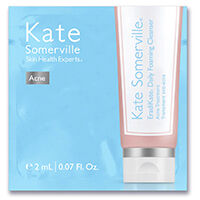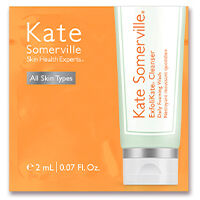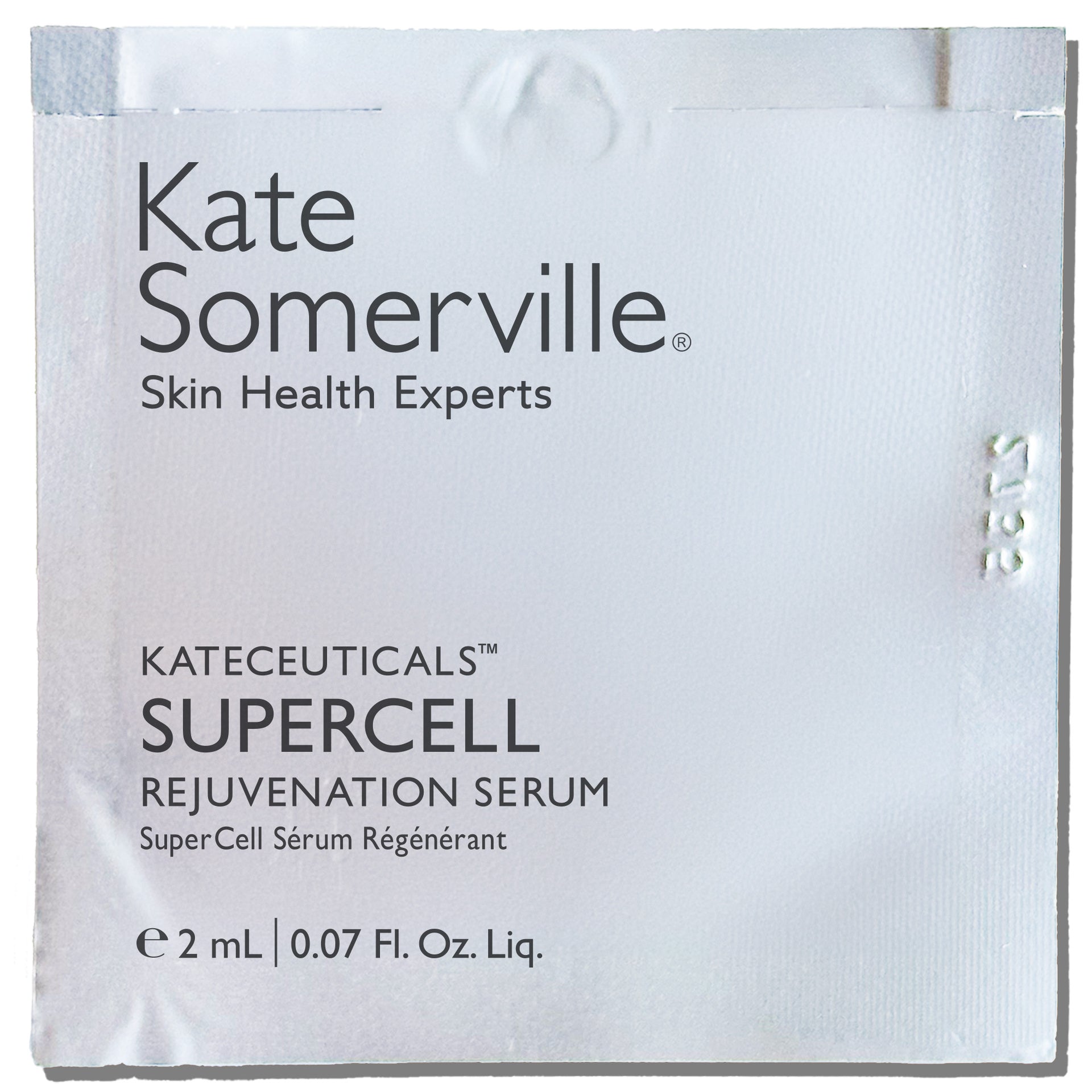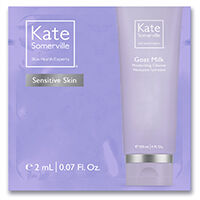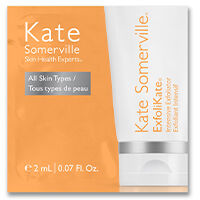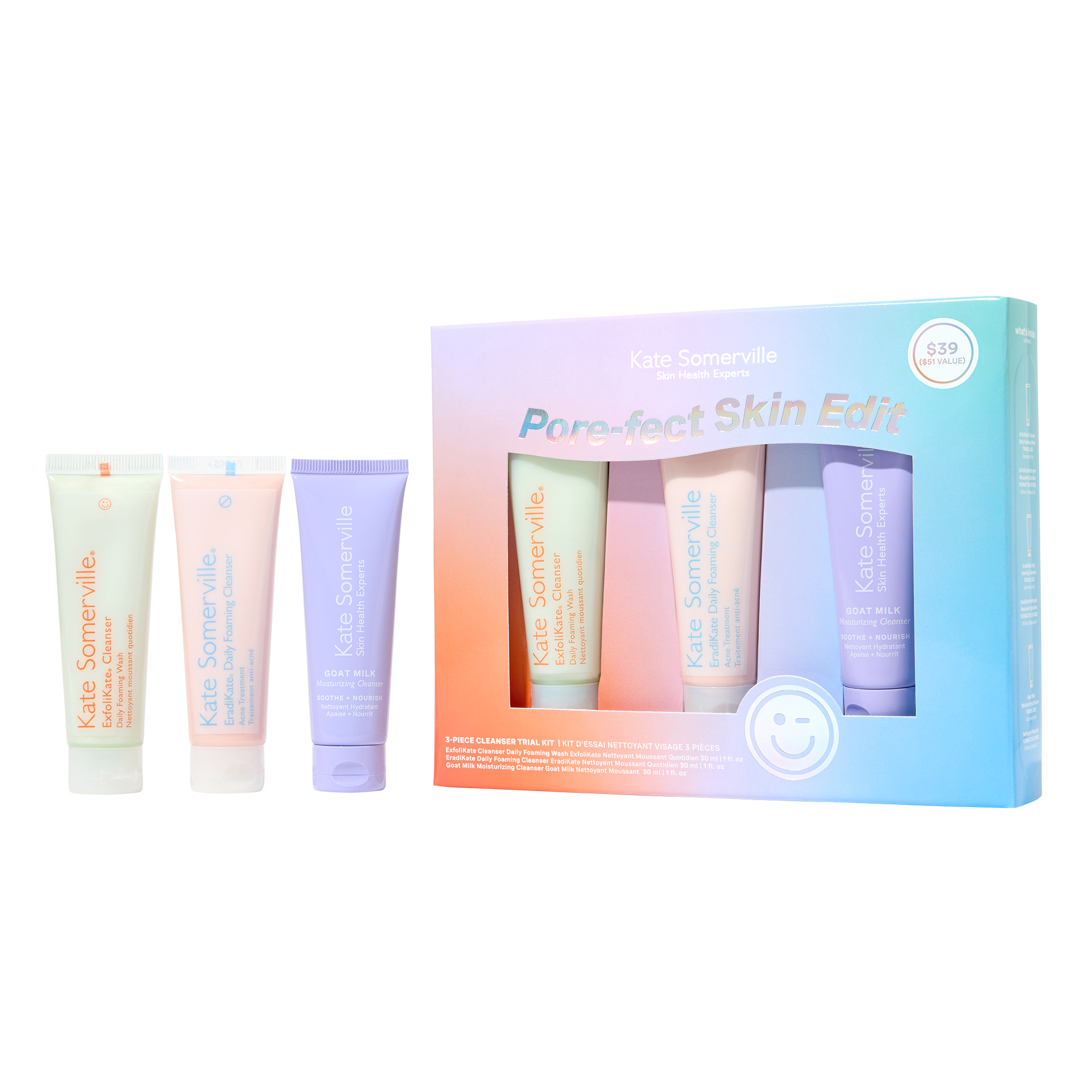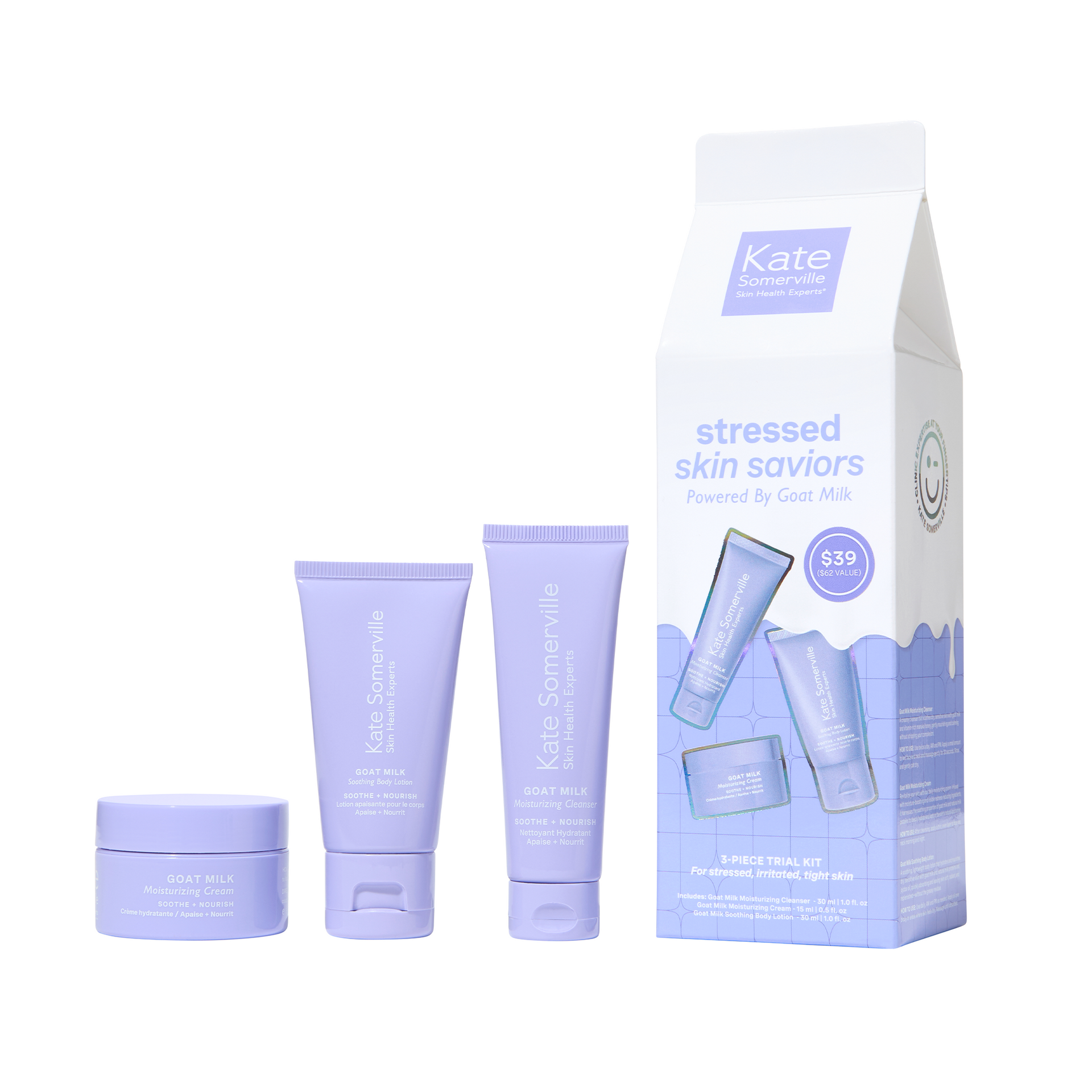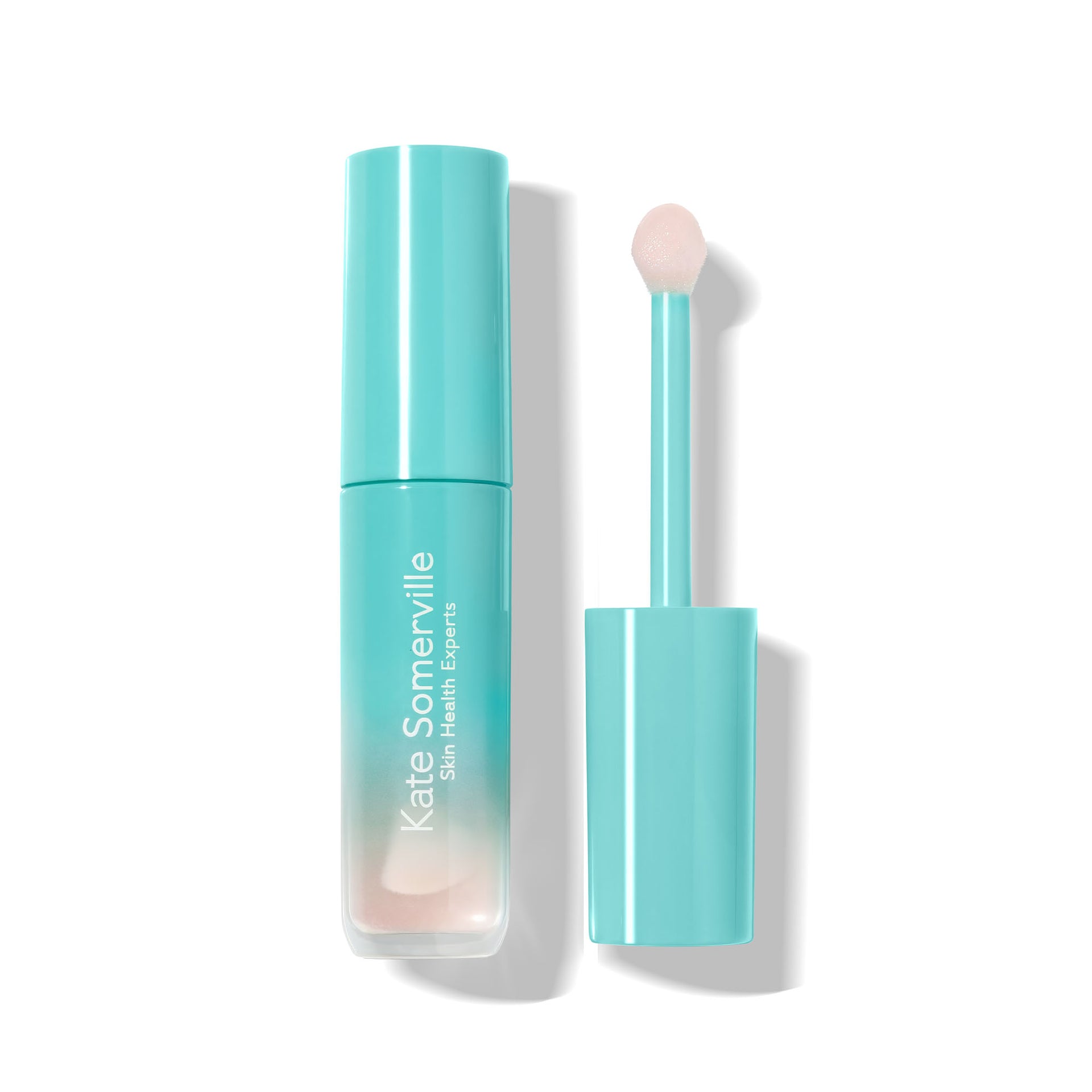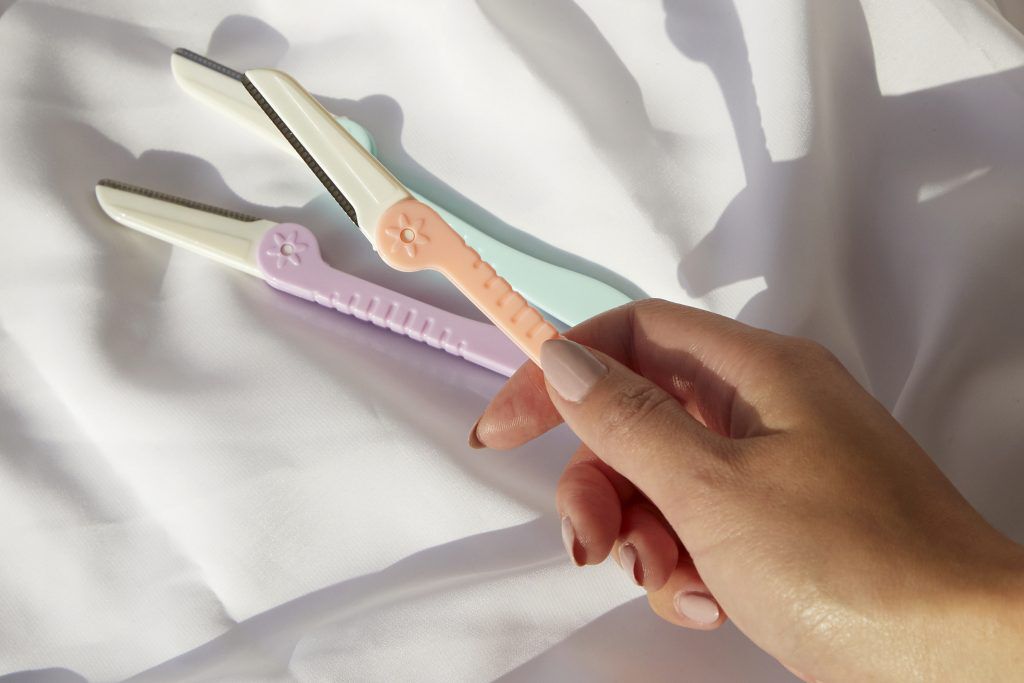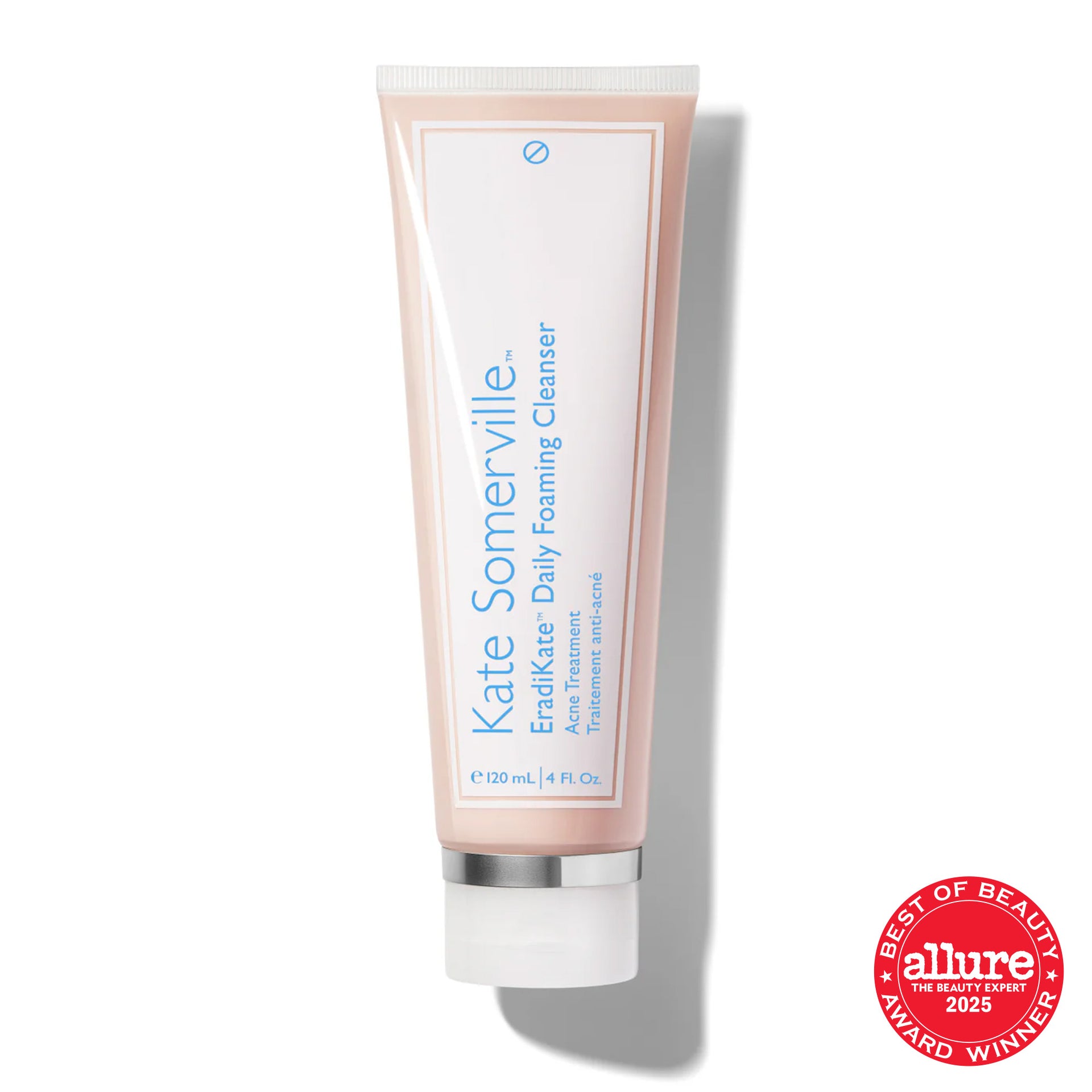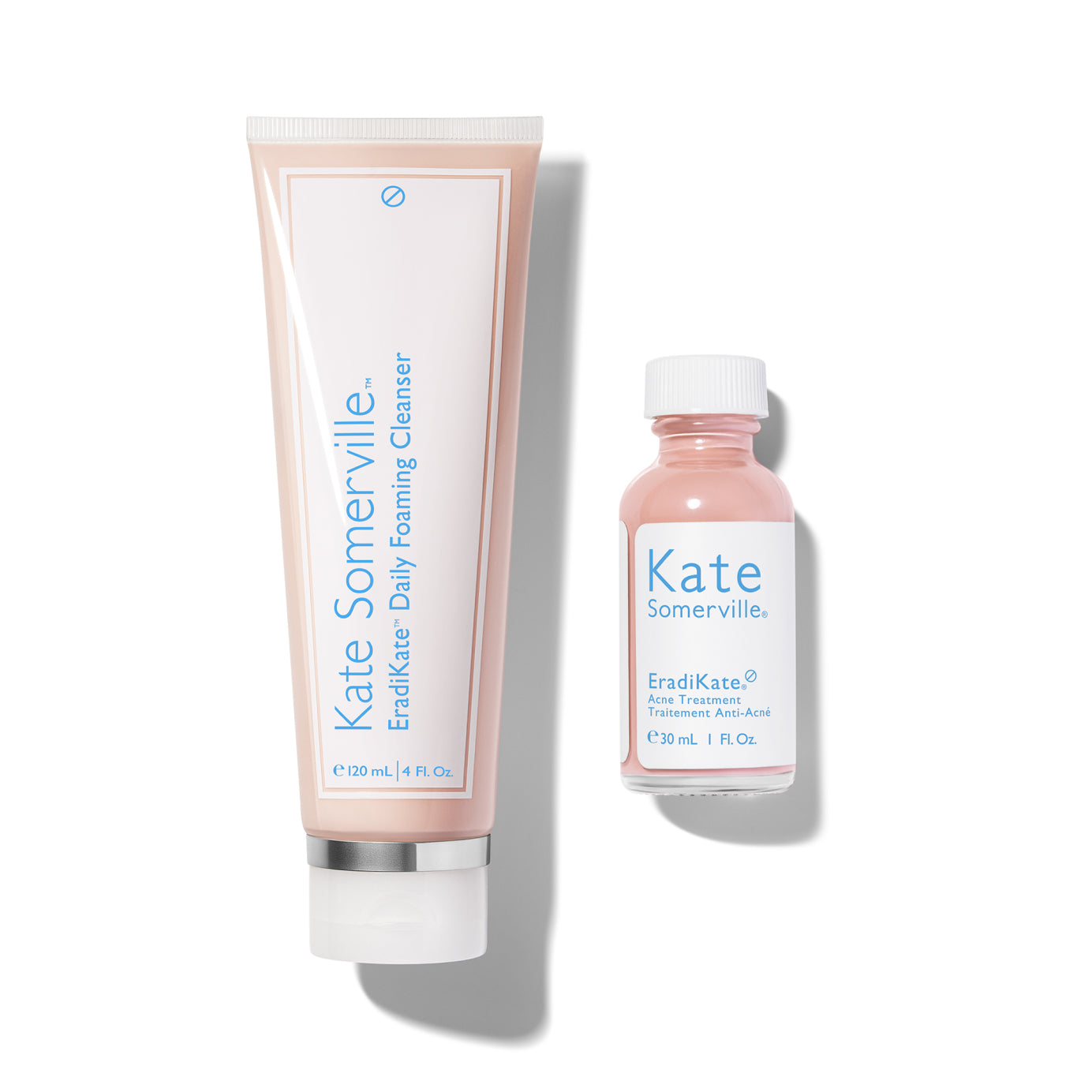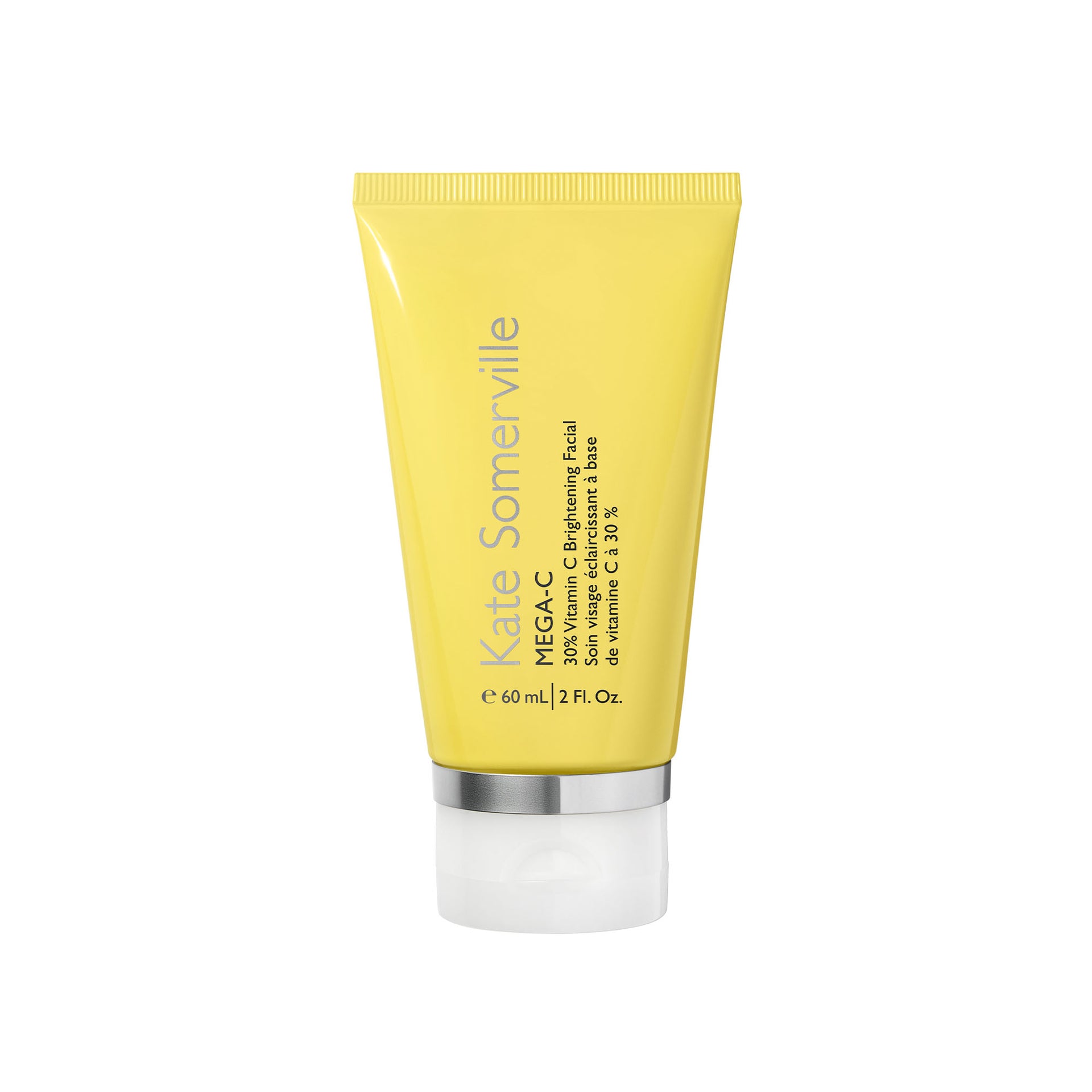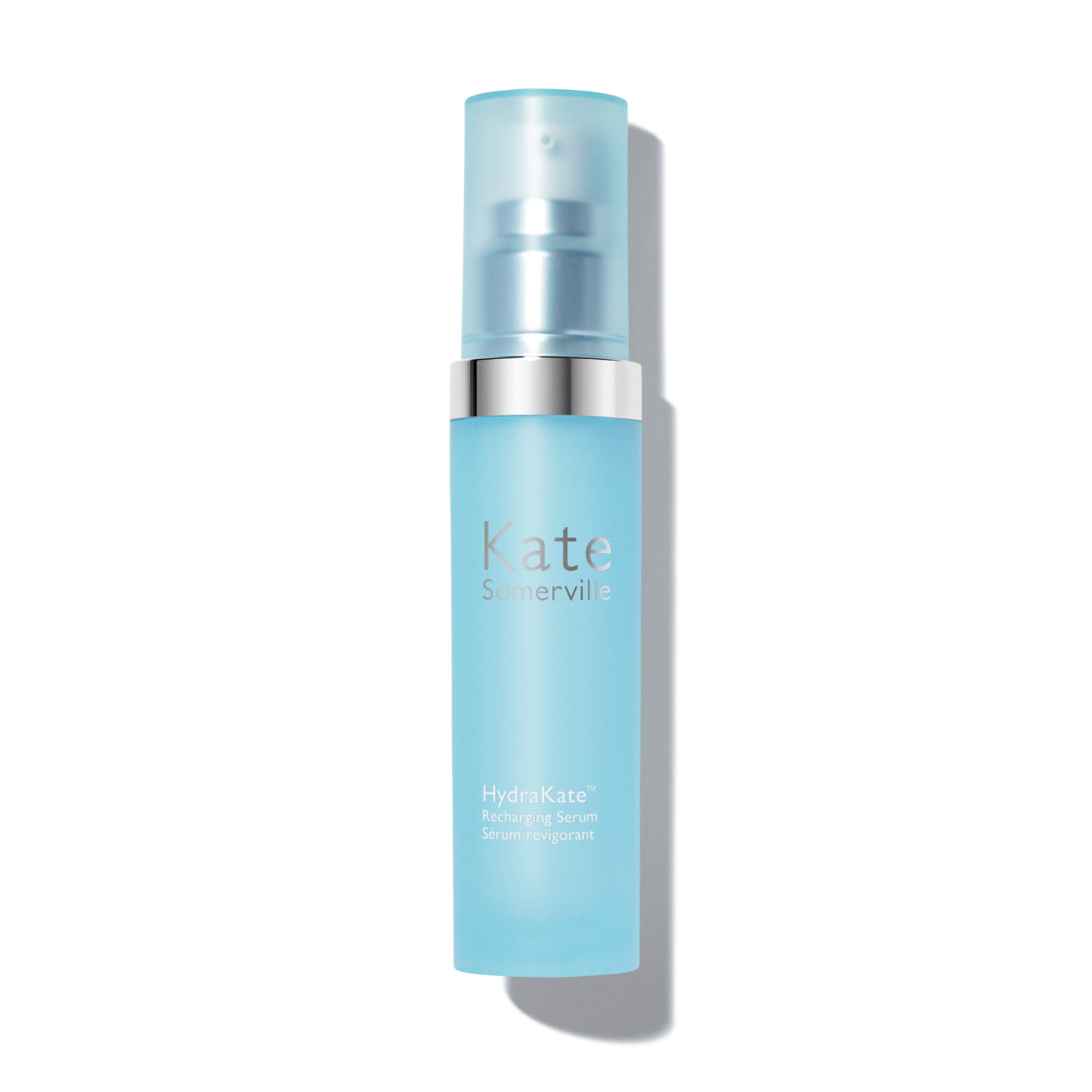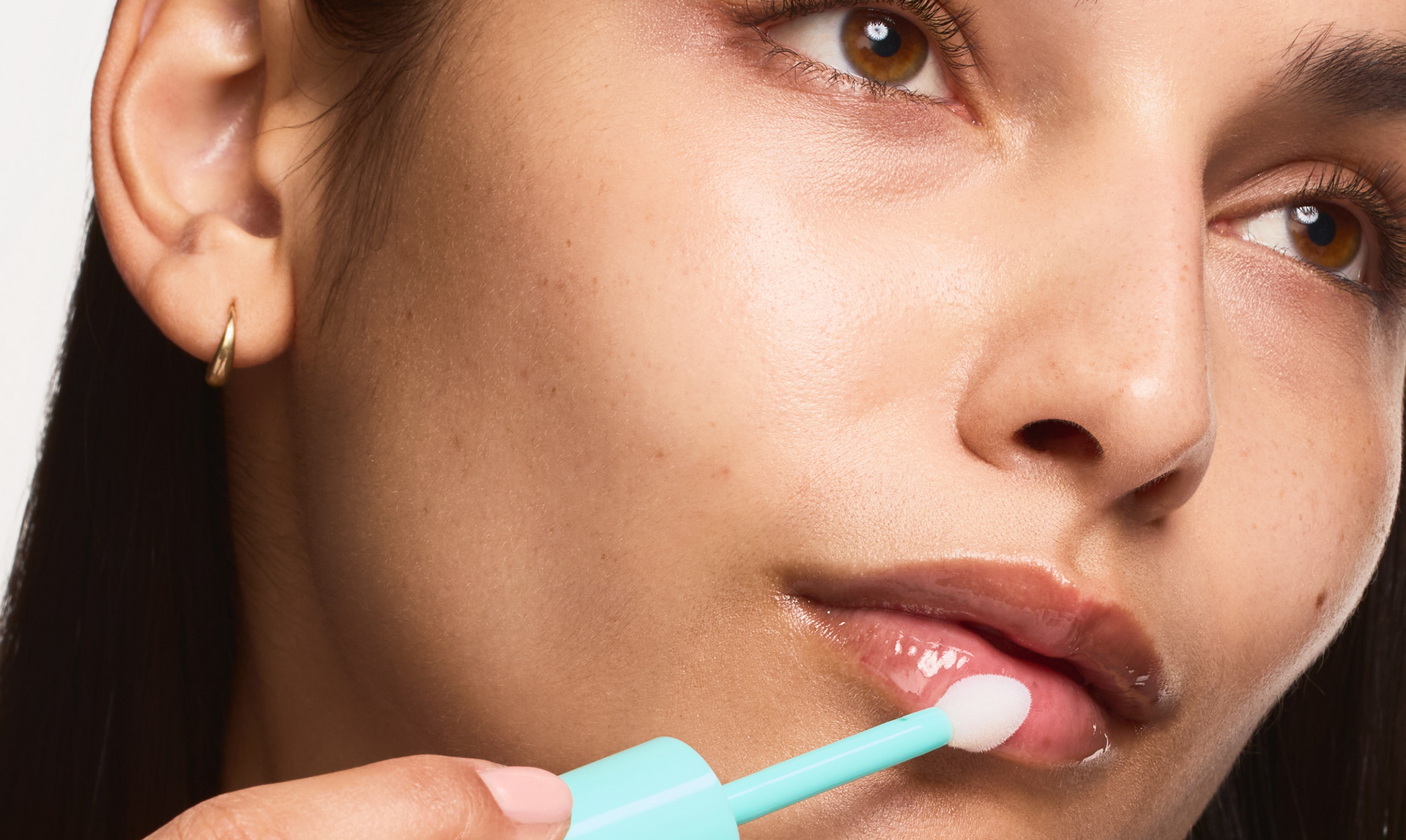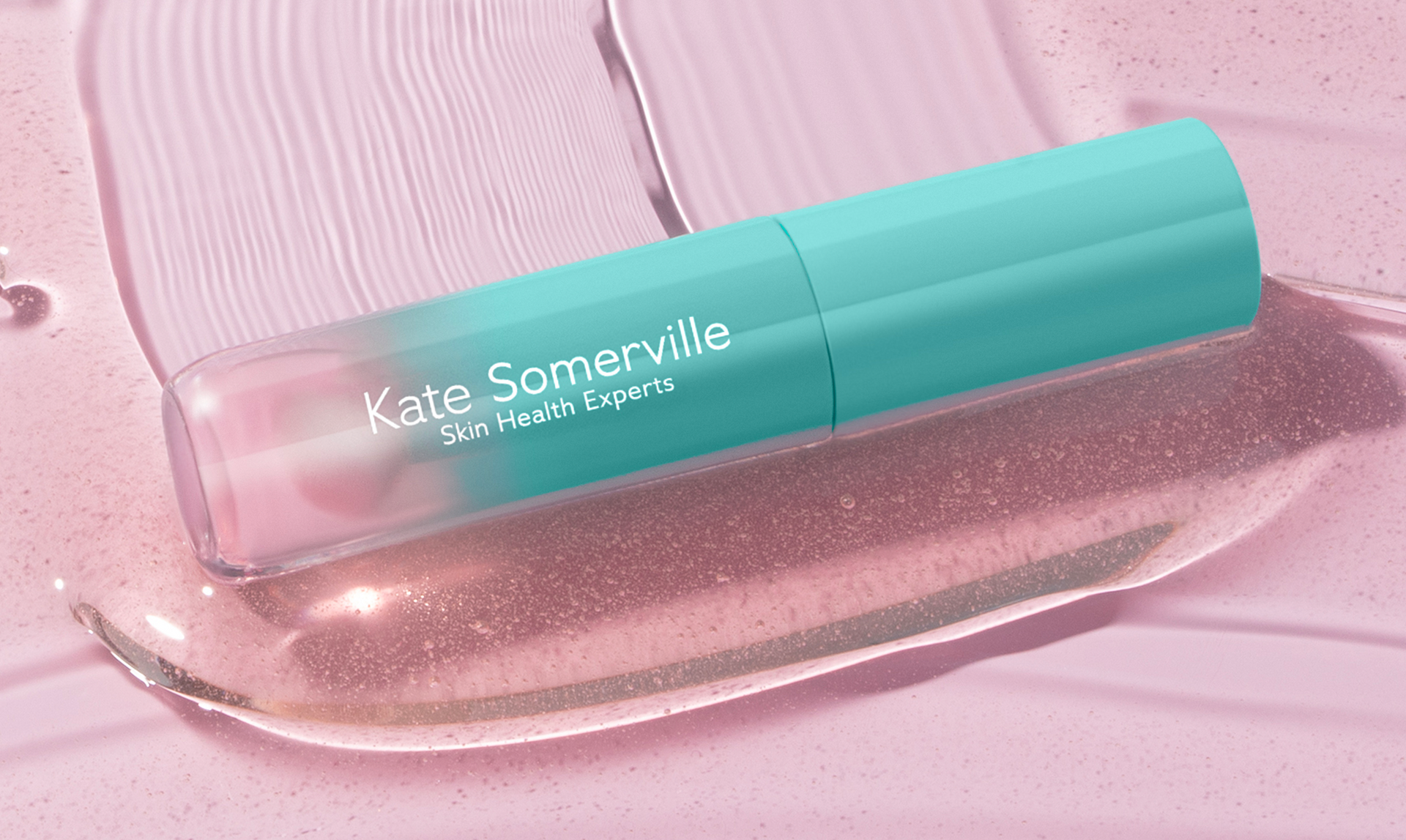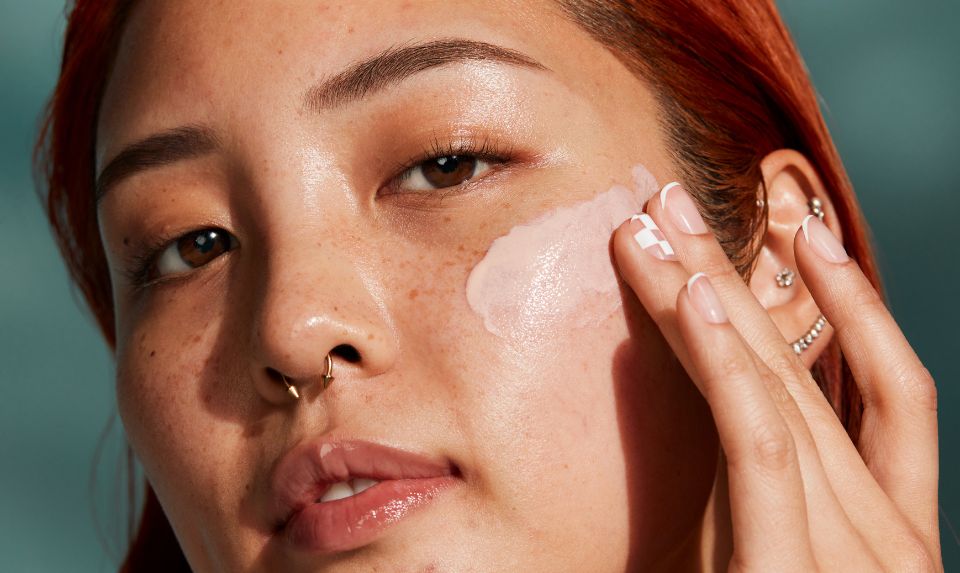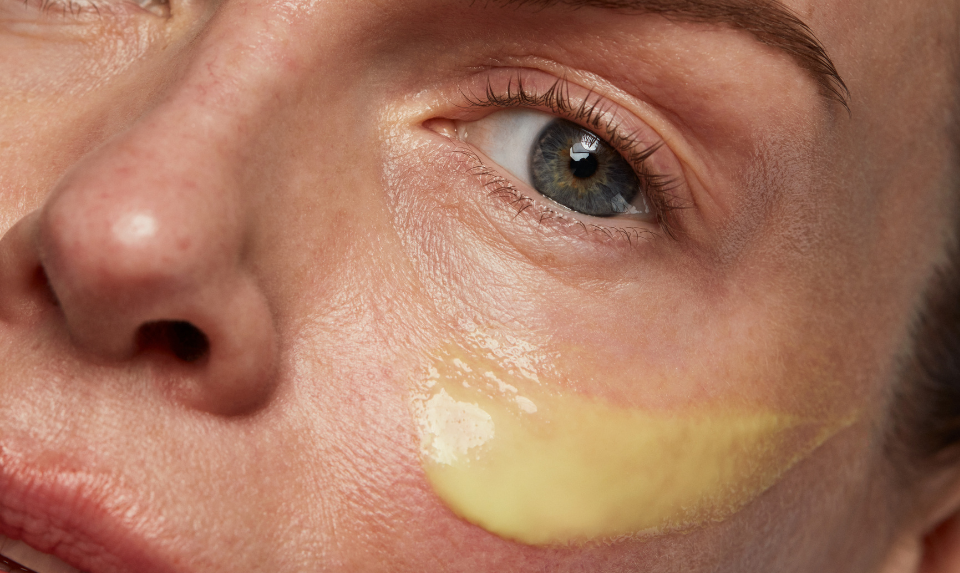Though dermaplaning has been around for a few decades, it seems to be taking the internet and our social feeds by storm in recent years. Some boast that the practice is the secret behind the glowing skin of many celebrities while others claim that it could leave you with thick, dark hair on your face. So what is the truth? And what is a dermaplaning facial exactly?As with anything, you can’t always trust what you read on the internet and it can be hard to find reputable information. That’s why we interviewed our Kate Somerville skin care clinic esthetician, Michelle Freese, to get the details about the mysterious dermaplaning facial everyone seems to be talking about these days. Plus, we’ll also share our top exfoliation tips fom Michelle herself!
What is Dermaplaning?
Put simply, dermaplaning is a skin procedure which uses a sharp dermaplaning tool to gently remove the small, fine hairs on your face [1]. Typically the sharp tool is a 10-inch surgical scalpel which curves into a sharp point and is designed to be used on the clean, dry skin of your forehead, cheeks, chin, nose, and neck. Your esthetician or dermatologist will use the scalpel to very gently scrape the surface of your face in light, feathering strokes to remove any hair. Despite sounding dangerous and terrifying, the entire procedure is virtually painless, though some side effects may occur such as slight redness or irritation. However, most people do not experience any unpleasantness during or after the treatment and are able to leave the procedure with no side effects. But what are the benefits of dermaplaning? We’re glad you asked!
Benefits of Dermaplaning
Aside from the obvious removal of hair, dermaplaning actually provides a number of benefits to those who utilize it. First, the gentle scraping of the surface of your skin acts as a physical exfoliant and removes dead skin in addition to hair. As we all well know, dead skin along with dirt and oil can clog pores resulting in infuriating breakouts which leads us to the second benefit… hairless skin is some of the cleanest skin. Because there is no hair to trap dirt, oil, and other debris clinging to your face, your skin will be cleaner after a dermaplaning facial which, again, helps prevent future breakouts and allows other products to penetrate more deeply into the skin. However, if you have an active breakout or suffer from severe acne,Michelle warns that a dermaplaning facial may not be the best option for you as “the process of dermaplaning can actually end up overstimulating the skin and worsen existing breakouts.”
Dermaplaning can also have some anti-aging effects as the removal of dead skin reduces the appearance of fine lines, hyperpigmentation, and acne scars [2]. In addition, you will experience improvements in your skin’s texture and specific skin tone and walk away with a dewy glow and skin that is silky smooth to the touch. As a result, your makeup will glide on evenly and flawlessly.
Michelle also recommends booking a dermaplaning facial prior to undergoing any laser treatments. “After the hair is removed, the laser treatment will not reflect off the hair and will be able to penetrate the skin better, making the treatment more effective.” The results of dermaplaning can last up to four weeks as the process removes about three weeks of dead skin from the surface of your face. However, your skin is constantly growing so you will need to be consistent in booking regular follow-ups if you want the results to last.
Fortunately, nearly anyone can benefit from and utilize dermaplaning treatments apart from those with actively inflamed acne as mentioned above. Outside of that, anyone seeking hair removal or exfoliation can add dermaplaning to their skincare routine. It can be a particularly great option for those who are unable to use certain products or other exfoliating treatments, including pregnant women or individuals suffering from sensitive skin.
Dermaplaning vs. Dermabrasion
People often get these two procedures confused or think they are interchangeable, but in reality, they are two distinctly different techniques with unique results. So, don’t ask for dermabrasion when what you really want is dermaplaning. As we already know, dermaplaning is quick, easy, and requires no downtime as it does nothing more than remove the hair and dead skin from the surface of your face. Dermabrasion, on the other hand, utilizes micro-crystals and suctioning to create mechanical exfoliation that can be quite intense on the skin [3]. In fact, dermabrasion can lead to infections and scarring, which is why it seems to be on the decline in skin care spas and clinics.
Dermaplaning Myths
Unfortunately, there is a lot of misinformation available to patients and consumers which can make dermaplaning sound awful. So we picked five of the most common myths circulating to address and help put your mind at ease.
- Your Peach Fuzz Will Grow Back Darker & Thicker - This is probably the most common myth we see in regards to not only dermaplaning but shaving in general. So many of us have been told that removing the hair from our legs and underarms results in the hair growing back darker and thicker than before leaving us all with deep-seated fears of unsightly hair. Let us put this rumor to bed once and for all. It is not possible for hairs to grow back thicker simply because you shaved [4]. The process in and of itself creates a blunt tip on the hair where you cut it at the thicker base next to the surface of the skin. Now we’ll admit that this blunt edge of the hair can appear thicker compared to the tapered tip that was present before, but it is not physically larger. Just as with shaving, the process of dermaplaning removes very, very fine hair called vellus hair which is so thin and soft that removing it will have no noticeable impact on the perceived thickness of the hair on your face [5] . Rather removing the vellus hair will instantly leave your skin feeling and looking smoother and brighter [6].
- It is Painful - We touched on this earlier, but dermaplaning is actually almost painless for most people. And, in fact, the actual process is painless much as shaving is but, similarly, some irritation may occur afterward which can have some pain associated. But compared to other methods of hair removal such as waxing, threading, and sugaring, dermaplaning feels more like a gentle tickle or brushing sensation as opposed to inducing any sort of pain.
- It Will Cause Breakouts - Though, as we mentioned, dermaplaning should not be performed on any skin with active acne as a treatment of acne. However, when used as a preventative measure, it is very effective in reducing the likelihood of future breakouts. By removing the dead skin on the surface of your face, dermaplaning prevents it from getting trapped inside your pores causing infection and leading to acne. Plus, by sloughing away dirt and debris, dermaplaning also makes it easier for acne treatments and serums to penetrate deeper into your skin which also helps prevent future acne.
- It Can’t Be Done on Darker Skin - Unlike some other exfoliation methods such as scrubs that are not recommended for darker skin, dermaplaning is absolutely safe for all skin types and shades. Even though the process is considered a manual exfoliation like a facial scrub, it does not cause micro-abrasions on the skin like a scrub can. Dermaplaning can actually be an incredibly effective exfoliation method for darker skin as it instantly removes the dark hairs that can make the skin look duller than it really is. How often should you exfoliate your face? Read the related blog to find out!
- It is Time Consuming - Though this is a subjective rumor, we tend to believe that 30 minutes isn’t too long to spend getting a procedure which will have results lasting up to four weeks. And given that you will only need to schedule an appointment once per month for lasting results, that doesn’t seem like an excessive amount of time to be spending on a single procedure.
So You Want to Try Dermaplaning… Now What?
Now that we have busted some of the most common myths about dermaplaning and you actually understand what it is and the wonderful things it can do for your skin, it is no wonder you are ready to book an appointment as soon as possible. But before you do, there are a few more important things you should understand. First, dermaplaning should only be doneby a board-certified dermatologist or licensed esthetician who specializes in the procedure. In both cases, there are a number of schools the individual can attend for training but they must pass a state exam in order to receive the proper credentials that allow them to carry out the practice of dermaplaning. Make sure you look for this licensure when choosing a spaor clinic. If they do not have it prominently displayed, ask to see it.
As far as cost, dermaplaning on its own can cost upwards of $100 per treatment. However, most spas and clinics tend to pair it with a facial or similar service which ensures that your skin is cleaned prior to the dermaplaning but ultimately raises your total over $200. In those cases, ask your esthetician if it is possible to have only the dermaplaning procedure rather than the whole package.
Finally, you will want to make sure you or your esthetician applies sunscreen to your face after the procedure. The exfoliation that occurs will leave your skin more sensitive to the sun and you need to take extra care to protect it for the few days following the treatment, though it should already be part of your daily routine.
Trying a new skin treatment can be a little nervewracking sometimes, but in the case of dermaplaning, it is well worth the adventure. Michelle notes that she especially “loves dermaplaning for dry skin and for removing peach fuzz.” Based on her years working in various skin clinics she highly recommends that her clients try dermaplaning at least once so they can experience the immediate effects for themselves. “Once you see it work right before your eyes, it is impossible to deny how wonderful dermaplaning is.”
Sources:
- https://www.scitechnol.com/peer-review/the-use-of-advance-dermaplaning-in-clinical-skin-care-and-treatment-bdzg.php?article_id=6961
- https://www.ncbi.nlm.nih.gov/pmc/articles/PMC3583892/
- https://www.ncbi.nlm.nih.gov/pmc/articles/PMC4155739/
- https://www.mayoclinic.org/healthy-lifestyle/adult-health/expert-answers/hair-removal/faq-20058427

